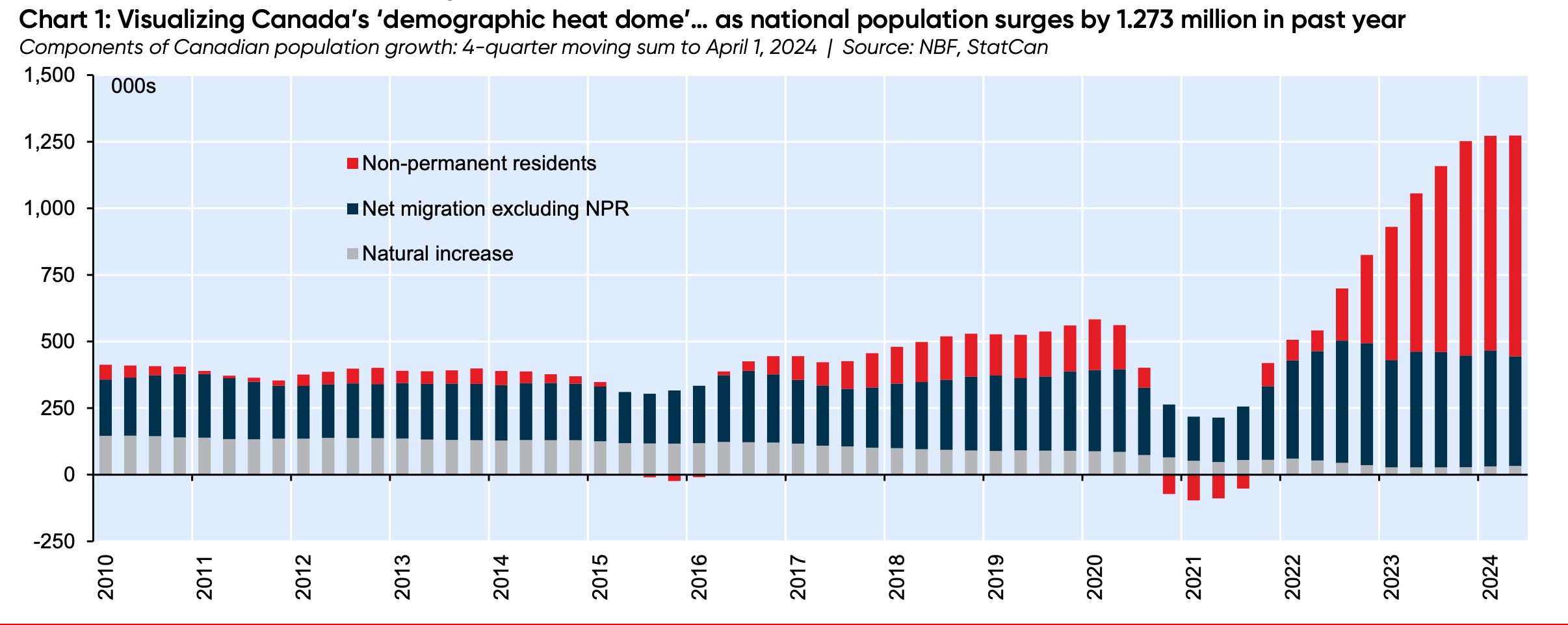I have been traveling in Canada recently, and much of it is nearly unrecognizable from even a year ago. Urban sprawl has exploded around major cities like Toronto and Ottawa, with new developments appearing so fast that even residents can't keep track.
The cause? An unprecedented policy experiment that is finally slowing. The Canadian government, faced with flatlining GDP, a declining birthrate, and an aging population, has instituted some of the most aggressive immigration policies in the OECD, and in recent Canadian history.
The result? Canada's population is now 41 million, having added a staggering 1.273 million new residents in the past year, a mix of permanent and non-permanent immigrants. This is the equivalent of the US adding more than 10 million immigrants a year.

The province of Ontario alone is losing at least 500 acres of farmland a day to sprawl, according to recent data, with city footprints simply exploding. This, of course, is pushing people further away from cities, where the pace of construction in formerly rural areas is staggering, with commensurate traffic and landscape destruction.

While some economists might laud the "free lunch" that comes with wide-open immigration, Canadians themselves are increasingly angry about what is going on. A generally tolerant society, historically open to immigration, Canadians are watching real estate get priced into the stratosphere, sprawl destroy much of what made cities' environs appealing, and traffic turning everyone into Angeleno freeway rage monsters.
The current Liberal government is finally pulling back, given widespread voter anger. What one brokerage firm calls a Canadian immigration "heat dome" may finally be subsiding, but there is immense financial latency and momentum in the system. Real estate prices may not rise more, but they will likely stay high, diverting continuing capital to non-productive uses, as well as forcing an unprecedented number of young Canadians to live with their parents, often into their 30s.
It looks increasingly likely that immigration will cost the highly unpopular Trudeau government the next election, with the Conservatives most likely to replace it. In the interim, Canada's heat dome will persist, with economic and societal consequences that will continue for decades.
But Canada is not alone in feeling the forces that gave rise to these policies, with governments trying various approaches, from baby bonuses, to increased immigration, to higher levels of robotics and automation. This is just one of many auguries of what lies ahead in aging and slowing developed economies.

